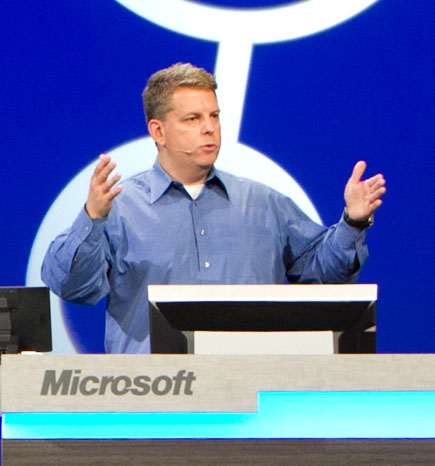ORLANDO – Windows Azure and Windows Server 2012, working together as the cloud OS. Windows 8, the new platform for next-generation application interaction. But what were Microsoft developers supposed to take away from their time here at Microsoft’s 20th installment of its TechEd conference?
Three things, according to Jason Zander, corporate vice president for the Visual Studio team in the Developer Division at Microsoft. First, Team Foundation Service is out of preview release, and now anyone can sign up to use it as a development solution.
The second takeaway was a preview of global service monitoring, which will be built into System Center 2012 SP1 to address DevOps. Zander said this will enable assets to be shared between IT and development teams. “Organizations can take the testing assets developers built and hand them to IT to use for monitoring in Azure. It’s kind of a heartbeat for the application,” he said.
“If something goes wrong, you want to bridge that information back in the other direction. You want the software to build up actionable data.”
This brings Microsoft into the DevOps arena, where the ability to deliver new feature sets to applications and get them into the wild more quickly is critical, Zander said.
The final takeaway for developers is the news that support for HTML5 has been built into LightSwitch, Microsoft’s rapid application development tool. “We saw a need for developers who were creating these applications, mostly about screens and data, and the intent of LightSwitch was always to give developers the ability to create these apps rapidly,” Zander said.
Of course, adding cross-platform capability to LightSwitch raised the question of what that means for Silverlight. “Silverlight still gives deep access to the underlying sensors, and we will continue to support it. That’s all been made clear,” Zander said.
One area where he said Microsoft is investing time and effort in is targeting jQuery and jQuery Mobile, which was released as version 1.1.0 in April. jQuery Mobile is an HTML5-based platform that has been optimized for touch-screens such as tablets and smartphones. “Expect to see us bring innovation in that space,” he said.
Application development for these devices happens in two parts, Zander explained. First, developers will put business logic around data and rules, to run on a back end and be exported via REST and APIs. “The richness is the next piece, to be able to take advantage of the underlying operating system, to write an app to take advantage of the Windows runtime,” he said.
The conference opened with a keynote talk that focused on the Windows Azure Platform-as-a-Service with Satya Nadella, president of the Server and Tools business at Microsoft, who said that developers today have to build applications that assume infrastructure failure could happen. “We need to teach developers to build applications that are resilient,” he said, “and how to write applications to achieve portability and scalability.”
He said Microsoft is building patterns, practices and guidance “right into our tool set” for continuous availability for services.






